Mets All-Time Team: The full roster
Since their inception in 1962, lots of incredible players have donned the orange and blue. Below, the updated Mets all-time 26-man roster is unveiled.
But first, some rules...
In order to be eligible for the team, a player must have spent a chunk of his career in Queens and experienced a solid part of his peak during that time. That means Pedro Martinez and Nolan Ryan won't be in the starting rotation, and Willie Mays won't be patrolling center field.
And now, the Mets' all-time team...
Starting Lineup
Catcher: Mike Piazza
Aside from the ace of the pitching staff, this was the easiest call to make.
While there is sentimentality when it comes to Gary Carter -- who was a co-captain with the Mets, helped them win the 1986 World Series, and is a Hall-of-Famer -- the answer is Piazza.
The greatest hitting catcher ever, who has a Mets cap adorning his plaque in Cooperstown, Piazza hit .296/.373/.542 with 220 homers in 972 games over eight seasons in Queens, was the backstop during two of their most exciting playoff runs, and has his No. 31 retired.
First Baseman: Keith Hernandez
A true difference-maker on both sides of the ball, the arrival of Hernandez via trade in 1983 helped revitalize the franchise.
Hernandez was a clutch performer, team captain, and heart and soul of the mid-to-late '80s squad. Like Piazza's No. 31, Hernandez's No. 17 is now retired.
Both Carlos Delgado (who hit 104 homers in four seasons with the Mets) and John Olerud (whose departure after 1999 hurt in a big way) deserve to be mentioned here, but neither played with the Mets long enough to challenge Hernandez for this honor.
Pete Alonso, a three-time All-Star who has hit .251/.342/.528 with 192 homers in his first five big league seasons, will almost certainly grab this spot if he remains with the team beyond 2024 (when he is set to hit free agency), but he's not there yet.
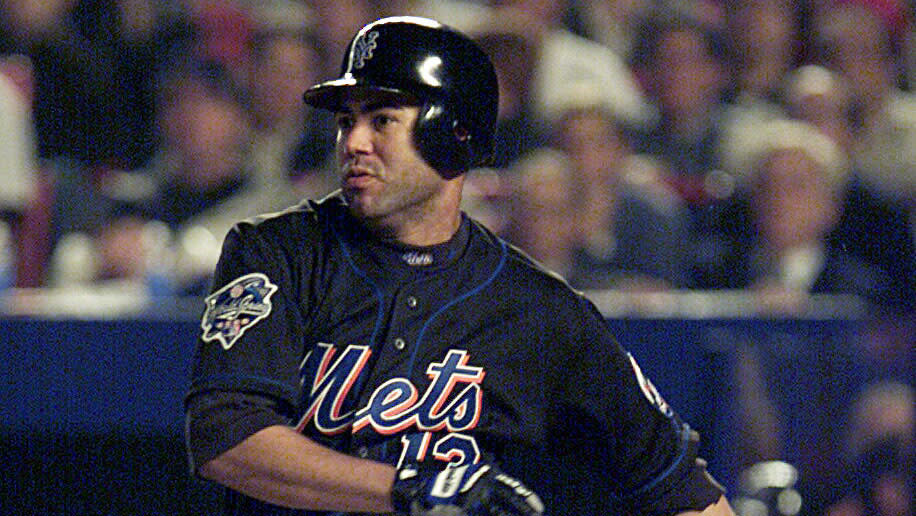
Second Baseman: Edgardo Alfonzo
Part of the Greatest Infield Ever with Olerud, Rey Ordoñez, and Robin Ventura, Alfonzo was the perfect sidekick to Piazza in the late '90s-early 2000s, and put up one of the best offensive seasons ever by a Met.
In 2000, Alfonzo slashed .324/.425/.542 with 25 homers and 40 doubles for a Mets team that made it to the World Series.
Unfortunately, injuries started to derail Alfonzo's career after the 2002 campaign.
Jeff McNeil, a batting champion and one of the best pure hitters the team has ever had, could at some point overtake Alfonzo for this honor.
Shortstop: Francisco Lindor
A major update from our most recent all-time roster is the addition of Lindor, who replaces Jose Reyes.
When it comes to electricity on the field in a Mets uniform, there was nothing quite like Reyes from 2005 to 2011, when his mix of speed and extra-base power combined to make him one of the best players in baseball.
But it's time for Lindor -- a top-10 finisher for MVP each of the last two seasons who has many years to go in a Mets uniform -- to get this honor.
During an age-29 season when he slashed .254/.336/.470 with 31 homers, 33 doubles, 31 steals, 98 RBI, and 108 runs scored, Lindor was the eighth-most valuable player in baseball, via fWAR, ahead of players including Julio Rodriguez, Juan Soto, and Aaron Judge.
And while most focus mainly on Lindor's offense, his defense at shortstop is truly elite and should always be highlighted when discussing him. Lindor was in the 90th percentile in Outs Above Average in 2023 after being in the 98th percentile in 2022 and 100th percentile in 2021.
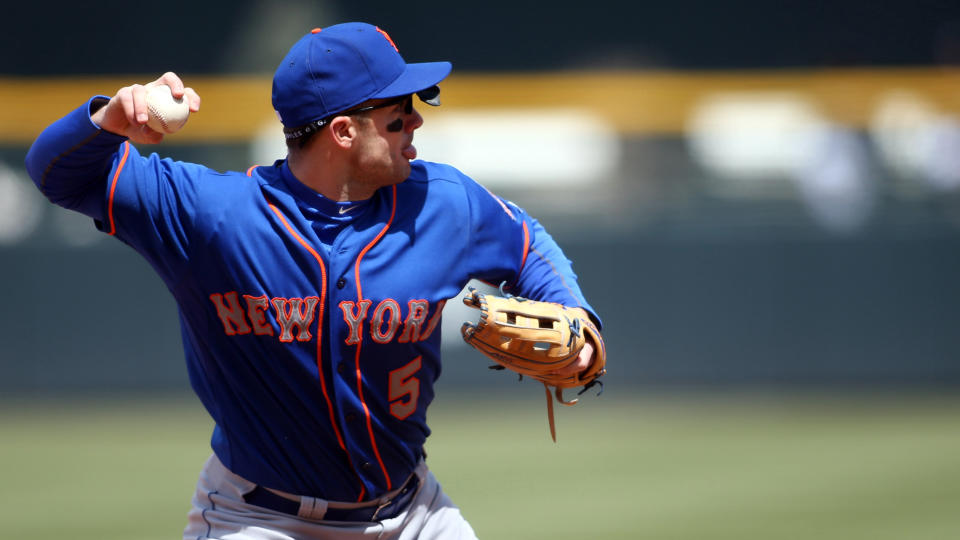
Third Baseman: David Wright
The Captain and a career Met, Wright was on a Hall-of-Fame trajectory when injuries -- including chronic spinal stenosis -- derailed his career when he was in his early 30s. Even with that, he received enough Hall of Fame votes in 2024 during his first year on the ballot to remain on and merit future consideration.
Wright is the Mets' franchise leader in most offensive categories, and his final career totals (even weighed down by his final injury-plagued seasons) are spectacular.
Wright hit .296/.376/.491 with 242 homers, 390 doubles, and 970 RBI in 14 seasons, and his No. 5 will almost certainly never be worn by any Met ever again.
Left Fielder: Cleon Jones
An integral part of the 1969 Miracle Mets, Jones spent 12 of his 13 big league seasons in Queens, hitting .281/.340/.406 in a shade under 1,200 games played with the team.
Jones also caught the final out of the '69 World Series in left field, clenching it moments before thousands of fans rushed the field.
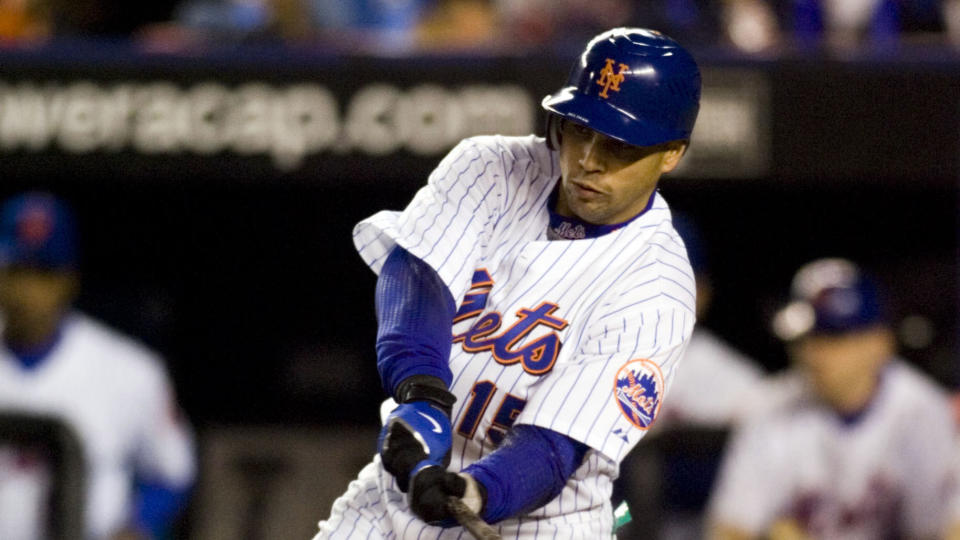
Center Fielder: Carlos Beltran
Arguably the greatest two-way player in Mets history, Beltran was one of the best fielding center fielders and an elite all-around hitter during his time in Queens from 2005 to 2011.
Beltran's smooth style was a joy to watch, and his 2006 season -- when he slugged close to .600 and crushed a then-team-record-tying 41 homers -- was incredible.
He is now back with the team in a front office capacity four years after his brief tenure as manager was derailed due to his role in the Houston Astros' sign-stealing scandal.
if Beltran eventually makes the Hall of Fame -- and it should happen within the next few years -- it could very well be with a Mets cap on his plaque.
The Mets should also consider retiring Beltran's No. 15.
Right Fielder: Darryl Strawberry
A Rookie of the Year and seven-time All-Star with the Mets during his eight seasons in Queens from 1983 to 1990, Strawberry's sweet left-handed swing electrified Shea Stadium and helped New York turn the corner on the way to contention.
In a different world, Strawberry stays with the Mets after the 1990 season instead of bolting for the Dodgers, avoids off-field issues, and continues on his course to the Hall of Fame.
In this world, we'll have to settle for his still-tremendous Mets career that included a club-record 252 home runs.
His No. 18 will be retired this season.
***
*With the designated hitter now in the National League, we'll eventually add a DH to the starting lineup of the all-time team. But we're not there yet.
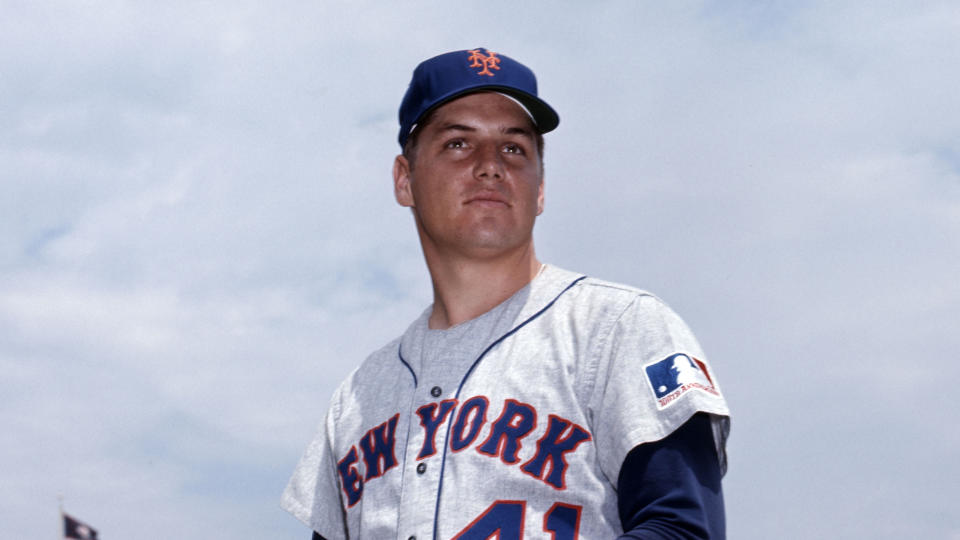
Starting Rotation
1. Tom Seaver
The Franchise, Seaver was not only the best Mets pitcher ever but one of the best pitchers in the history of baseball.
Seaver won three Cy Young awards with the Mets (1969, 1973, and 1975), and helped lead New York to the World Series title in 1969 and within a game of a second title in 1973.
In 12 seasons with the Mets, Seaver had a 2.57 ERA and 1.08 WHIP while fanning 2,541 batters in 3,045.2 innings.
2. Jacob deGrom
Unlike Seaver, deGrom came out of nowhere -- a converted shortstop who was initially called up to help the bullpen in 2014 but instead immediately became one of the best starting pitchers in baseball.
Winning back-to-back Cy Young awards in 2018 and 2019, deGrom became the first Met to accomplish that feat. And then he got better, with his fastball routinely hitting triple-digits and slider reaching as high as 96 mph.
In nine seasons with New York -- with the final two unfortunately being marred be injury -- deGrom's numbers were staggering: A 2.52 ERA, 0.998 WHIP, and 1,607 strikeouts in 1,326.0 innings.
DeGrom had a chance to supplant Seaver as the ace on this list, but that went out the window when he left via free agency following the 2022 season to join the Texas Rangers.
Still, deGrom's No. 48 should be retired at Citi Field when his career is over.
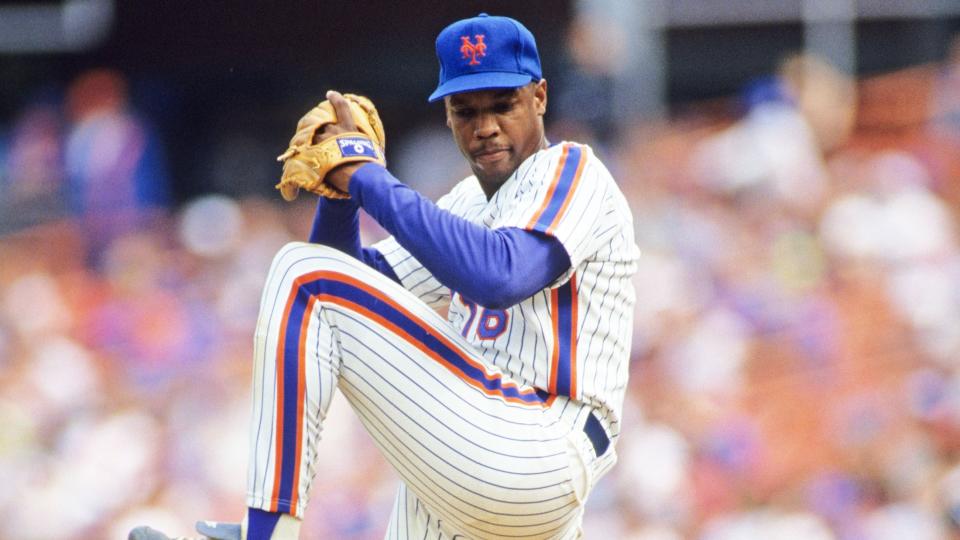
3. Dwight Gooden
The "K Korner" was born at Shea Stadium when Gooden burst onto the scene, and he spun two of the most dominant seasons ever in 1984 and 1985.
In '85, Gooden won the Cy Young after putting up this ridiculousness as a 20-year-old: 1.53 ERA, 0.96 WHIP, and 268 strikeouts in 276.2 innings.
Like Strawberry, it's hard not to wonder what could've been with Gooden, whose battles with substance abuse began to severely impact his career in 1987.
Also like Strawberry, Gooden's number will be retired this season.
4. Jerry Koosman
Seaver's wingman, Koosman -- whose No. 36 was retired in 2021 -- was a force in his own right during the 12 years he spent with the Mets from 1967 to 1978 -- posting a 3.09 ERA and 1.22 WHIP in over 2,500 innings.
His most dominant stretch came from 1968 to 1971, and included tossing a complete game in Game 5 of the 1969 World Series as the Mets won their first title.
5. Sid Fernandez
Fernandez is often overlooked, but he shouldn't be. And he eked out David Cone for this spot.
During his 10 seasons with the Mets from 1984 to 1993, Fernandez and his "rising fastball" posted a 3.14 ERA and 1.11 WHIP while striking out 1,449 batters in 1,584.2 innings.
Fernandez wasn't in the Mets' 1986 postseason rotation that featured Bob Ojeda, Dwight Gooden, and Ron Darling, but he made arguably the most important relief appearance in team history in Game 7 of the World Series against the Red Sox.
Taking over for Darling with the Mets trailing 3-0 in the fourth inning, Fernandez fired 2.1 innings of no-hit ball while walking one and striking out four to keep New York in the game.
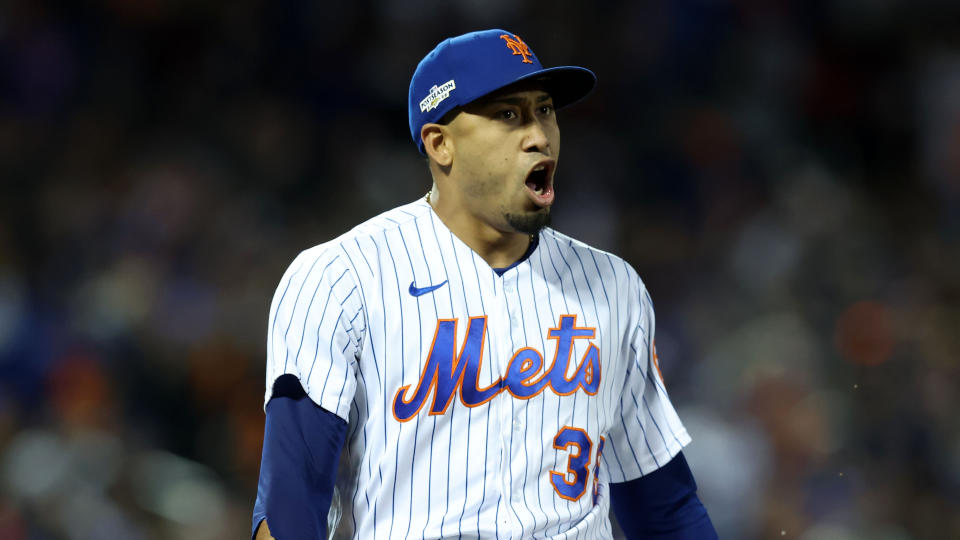
All-Time Bullpen
Closer: Edwin Diaz
Sound the trumpets.
Diaz, who persevered after a rough first season with the Mets in 2019 and dominated the next three years, spun one of the best seasons any reliever has ever had in 2022.
In 62 innings over 61 appearances, Diaz -- utilizing his dastardly fastball/slider combination -- posted a 1.31 ERA (0.90 FIP) and 0.83 WHIP with 118 strikeouts (an eye-popping 17.1 per nine). Following the season, he signed a five-year extension that made him the highest-paid closer ever.
From 2020 to 2022, Diaz had a 2.27 ERA (1.78 FIP) and 0.99 WHIP with 257 strikeouts in 150.1 innings over 150 appearances.
Diaz unfortunately missed the entire 2023 season after a freak knee injury at the World Baseball Classic, but he is expected to be back at full strength for 2024.
Setup Man: Billy Wagner
During his three full seasons with the Mets, Wagner -- who just came five votes shy of the Hall of Fame but should make it next year during his final year on the ballot -- was his regular unbelievable self, firing 100 mph fastballs as he posted a 2.37 ERA and 1.05 WHIP while striking out 230 batters in 189.2 innings.
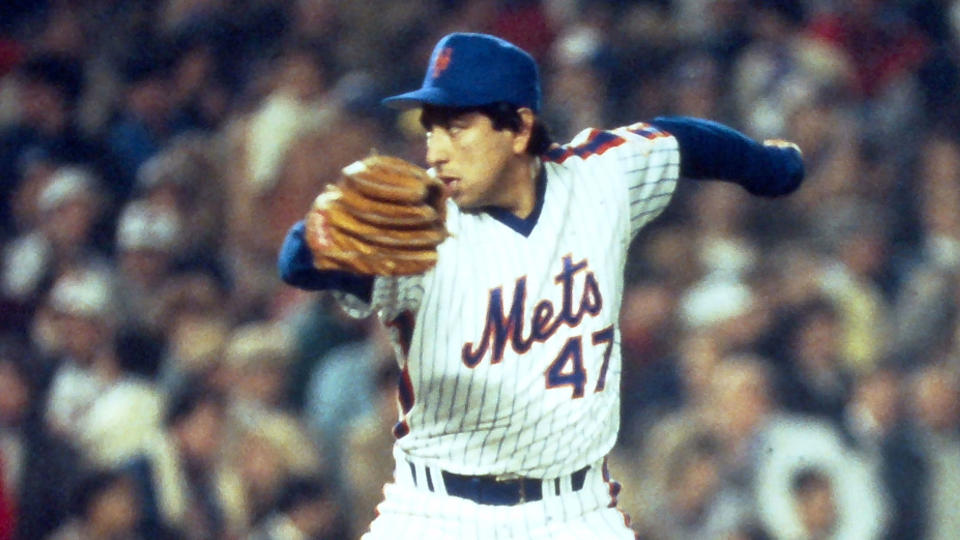
Middle Relievers: John Franco, Armando Benitez, Jesse Orosco, Roger McDowell, and Tug McGraw
The kid from Brooklyn, Franco had a 3.10 ERA in 14 seasons with the Mets and amassed 276 saves along the way, eventually becoming a setup man during a career that lasted 21 years.
Benitez gets a bad rap and will never be forgiven for blowing Game 1 of the 2000 World Series, but he was mostly dominant as a Met. Look at his numbers. Seriously, go look.
Orosco was splendid during his eight seasons with the Mets, posting a 2.73 ERA and closing out the NLCS and World Series in 1986.
McDowell (as the glue of the 1986 bullpen) and McGraw (the originator of the "Ya Gotta Believe" rallying cry) round out the middle relief group.
Long Reliever: Rick Aguilera
Aguilera was a starter/reliever hybrid for the Mets from 1985 to 1988 before becoming a full-time reliever in 1989 and eventually moving on to the Minnesota Twins, where he became one of the best relievers in baseball. He's the perfect man for this job.
Bench
Before discussing the bench, it should be pointed out that the original version of this roster had a bench that was made up of players who were often used in a reserve role -- not the next best player at each position. You can see that version here.
But, since so many clamored for a bench that was the next best player at each position, it's below.
Additionally, it should be noted that Alonso and McNeil could already be on this bench. But since they'll potentially supplant the starters at first base and second base in the near future, we're going to keep them off the pine -- at least for now.
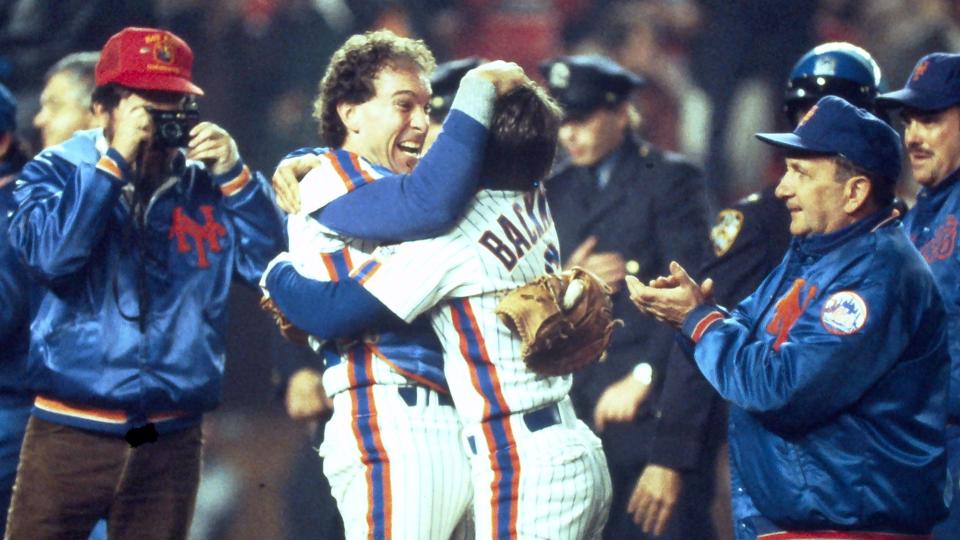
Catcher: Gary Carter
This was the easiest bench selection to make.
Carter's tenure in Queens spanned 1985 to 1989, and he was a four-time All-Star during that time. He had huge seasons in 1985 and 1986 (when he finished in the top six in MVP voting each year), and was part of the heart and soul of the '86 championship squad.
First baseman: John Olerud
My initial inclination was to give the nod to Carlos Delgado, who slugged 104 homers for the Mets from 2006 to 2009. But we went with the slick-fielding and sweet-swinging Olerud.
With the Mets rom 1997 to 1999, Olerud slashed .315/.425/.501, which included batting .354/.447/.551 in 1998. Olerud's .354 average in '98 is the Mets' single-season record.
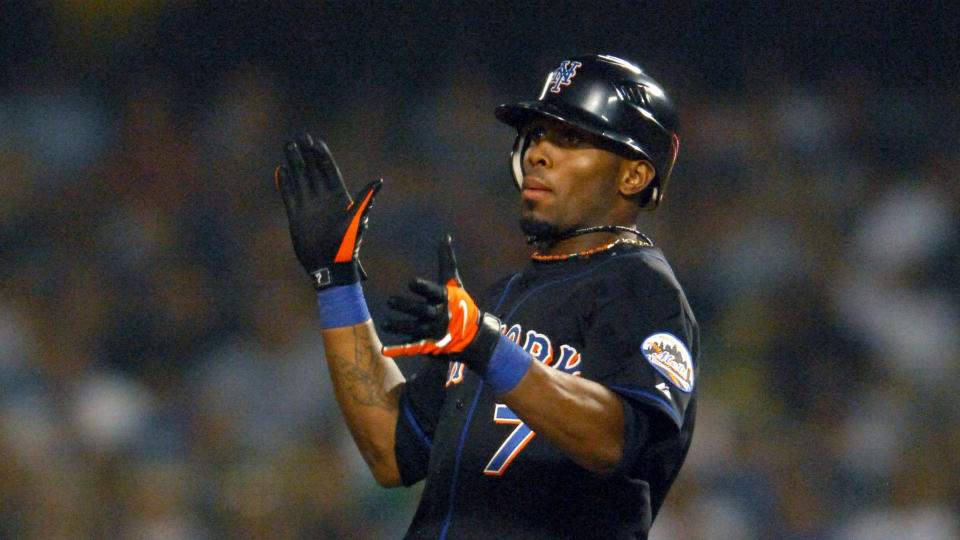
Infielder: Jose Reyes
A typical Reyes season during his peak meant a high batting average and on base percentage along with 15-to-20 triples, 30-plus doubles, 55-plus stolen bases, and the daily sight of him turning singles into doubles and doubles into triples.
The gear Reyes hit when rounding second and heading to third was a sight to see.
Outfielder: Brandon Nimmo
Nimmo replaces Mookie Wilson, whose longevity, stolen base prowess, defense, personality, and big-game moments (Game 6, anyone) initially had him as the backup outfielder.
But it's impossible to continue to ignore Nimmo, who will soon topple Cleon Jones as the left fielder if his move from center to left is permanent.
In eight seasons with the Mets, Nimmo has been an on-base machine, slashing .270/.380/.447. His OPS has been .800 or better each of the last four seasons (and five of the last six), as he has become one of the most valuable outfielders in baseball.
Cliff Floyd was also in the conversation here, as was Michael Conforto, whose Mets tenure is woefully underappreciated.
Pinch-hitter: Rusty Staub
There's an argument here for Matt Franco, and a case could be made for Lenny Harris. But the pinch-hitter on the Mets' all-time team is Le Grand Orange, who spent two chunks of his terrific career with the Mets -- one in the 70s and another in the 80s.

